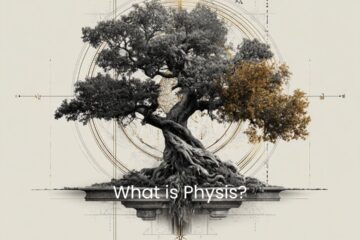Introduction

Ataraxia (ἀταραξία) is often translated as tranquility or peace of mind. In simple terms, it describes a state of being undisturbed by worry, fear, or excessive desire. For Stoics, this calmness is not passive indifference but the active result of living in harmony with reason, virtue, and nature.
Why does this matter today? In a world of constant noise, comparison, and distraction, the Stoic pursuit of ataraxia offers a timeless path toward inner stability, one that doesn’t depend on circumstances but on how you choose to see and respond to them.
Breaking Down the Word
- Greek spelling: ἀταραξία
- Roots: from a- (without) and taraxia (trouble, disturbance, or turmoil).
- Literal meaning: “without disturbance” or “freedom from turmoil.”
Philosophically, ataraxia means reaching a state where your judgments are clear, your desires are measured, and your emotions do not drag you around. For the Stoics, it was less about escaping the world and more about engaging with it from a position of inner calm.
Key Dimensions of Ataraxia
- Freedom from Inner Turmoil
Ataraxia means no longer being tossed back and forth by fear, anger, or greed. - Clarity of Judgment
Disturbance comes from false beliefs about what is good or bad. Ataraxia arises when you see things for what they are, indifferents governed by nature. - Steadiness in Action
Calmness isn’t passive. It enables purposeful, courageous, and compassionate action without being clouded by anxiety or passion.
Ataraxia and Core Stoic Principles
- Virtue (ἀρετή): Ataraxia flows naturally from living virtuously. If you know your actions align with justice, courage, moderation, and wisdom, there is no cause for disturbance.
- Reason (λόγος): Clear thinking dissolves confusion. Ataraxia is the fruit of applying reason to impressions before assenting.
- Nature (φύσις): Peace comes from living in agreement with the natural order, accepting what happens as part of the whole.
- Wisdom (σοφία): The wise person is undisturbed because they understand what truly matters.
- Community (κοινωνία): Ataraxia also extends outward when you recognize that other people act according to their nature; their behavior can no longer shake your peace.
Modern Misunderstandings
- Ataraxia ≠ Numbness
Some mistake tranquility for being emotionally cold or detached. Stoic ataraxia is not suppression; it is freedom from being ruled by destructive emotions. - Ataraxia ≠ Escape
Unlike withdrawing from life, Stoic ataraxia allows full engagement with duties, relationships, and challenges, just without the turmoil of false judgments.
Ataraxia vs Apatheia
It is easy to confuse ataraxia with another Stoic concept: apatheia (ἀπάθεια). While both refer to freedom from disturbance, they are not the same. Apatheia describes freedom from the sway of destructive passions, anger, fear, and excessive desire, through the correct use of reason. Ataraxia, on the other hand, is the felt result of this freedom: a calm and tranquil state of mind. In short, apatheia is the condition of being unmoved by harmful emotions, while ataraxia is the tranquility that naturally follows.
Ataraxia in Stoicism vs Epicureanism
Ataraxia also played a central role in other schools of philosophy, most notably Epicureanism. For the Epicureans, ataraxia was the highest goal of life, achieved by minimizing pain, avoiding unnecessary desires, and cultivating simple pleasures. Stoicism, however, set its sights on something higher: eudaimonia (εὐδαιμονία), or human flourishing through virtue. While Stoics valued ataraxia, they saw it as a byproduct of wisdom and correct judgment, not as the ultimate aim of existence.
Why It’s Central to Stoicism
Epictetus put it plainly:
“Remember that what is insulting is not the person who abuses or hits you, but the judgment that these things are insulting. So when someone irritates you, realize that it is your own opinion that has irritated you.”
Epictetus, Handbook, 20
If disturbance arises from judgments, then peace (ataraxia) arises from correcting those judgments. Ataraxia is both a marker of progress and a reward for consistent Stoic practice. Seneca reminds us:
“The power of the mind resides in being unconquerable, experienced in life, calm in action, and possessed of much kindness and concern for those with whom it has dealings.”
Seneca, On the Happy Life, 4
Practical Applications
- Journaling Prompt: Each evening, write down what disturbed you that day. Then ask: was it the event itself, or your judgment of it?
- Daily Mindset Check: Begin the day by reminding yourself: Nothing external can disturb me unless I grant it power.
- Situational Exercise: When you feel agitation rising, pause and name the impression: “This is just an opinion about loss/pain/fear, not the thing itself.”
- Gratitude Practice: Notice how much peace is already present when you stop chasing more.
FAQ
What does ataraxia mean in Stoicism?
Ataraxia means tranquility of mind, a state free from disturbance, achieved by aligning desires and judgments with reason and virtue.
Is ataraxia the same as happiness?
Not quite. Happiness (eudaimonia) is the flourishing life according to virtue. Ataraxia is the inner peace that supports and follows that flourishing.
Can anyone develop ataraxia?
Yes. Like all Stoic practices, it requires training, examining impressions, adjusting desires, and practicing acceptance daily.
Conclusion
Ataraxia is not about escaping life but about living it without being enslaved by fear or agitation. It is the calm strength that comes from clarity, virtue, and trust in nature. Practiced daily, it becomes a steady anchor in the turbulence of the world.
Want to explore more Stoic strategies?
Book a free consultation with one of our Stoic Coaches or learn about more Stoic philosophy terms. You can also listen to the Via Stoica podcast on Spotify or Apple Podcasts or watch it on YouTube.



0 Comments